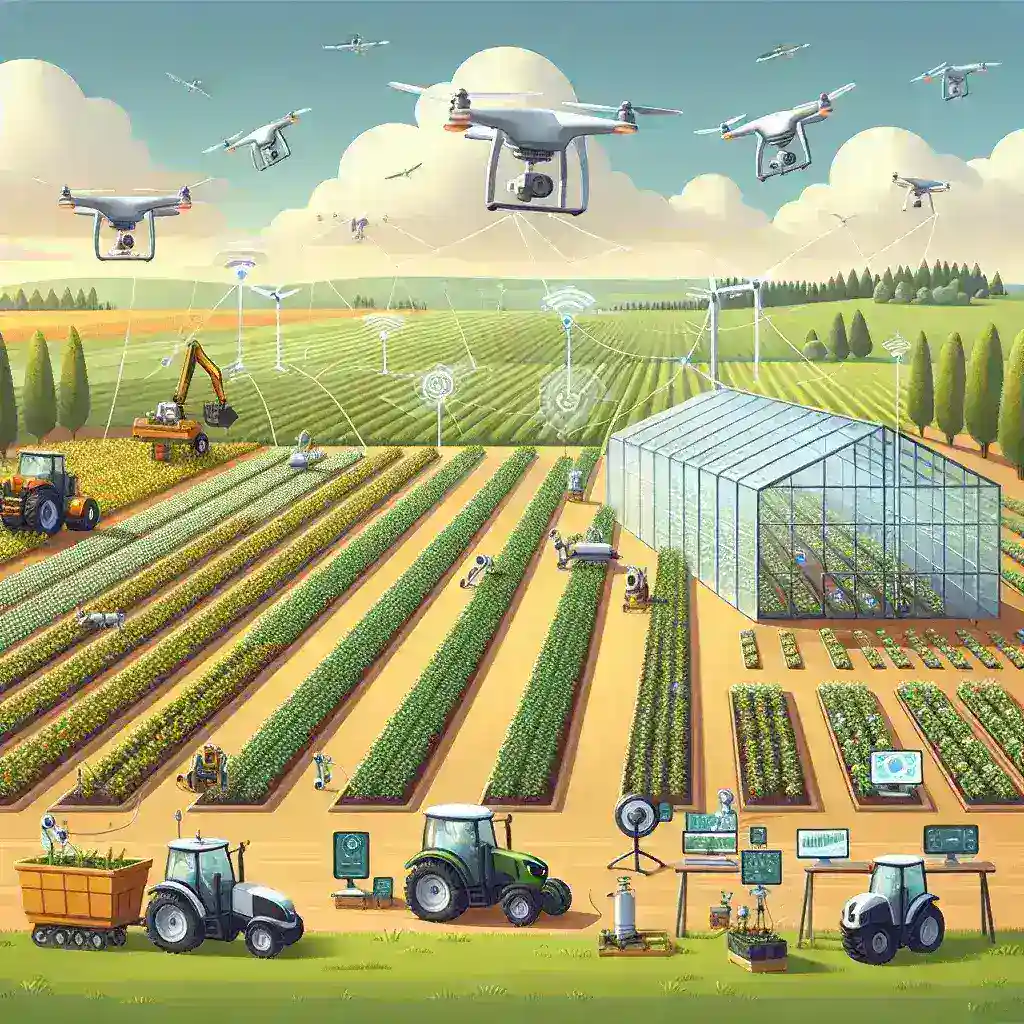Introduction to AI in Agriculture
The integration of Artificial Intelligence (AI) in agriculture is one of the most significant advancements in recent times. As the global population continues to grow, the demand for more efficient and sustainable farming practices is rising. AI offers smart farming solutions that promise to revolutionize traditional farming methods, enhance productivity, and ensure sustainability.
Advantages of AI in Agriculture
1. Precision Farming
Precision farming involves using AI technologies like sensors, GPS, and data analytics to optimize field-level management regarding crop farming. AI helps in:
- Soil Management: AI tools analyze soil health, allowing farmers to manage nutrients and irrigation more effectively.
- Crop Monitoring: Drones and sensors powered by AI monitor crop health, detect diseases early, and ensure timely interventions.
- Efficient Resource Use: By analyzing data, AI helps in the efficient use of water, fertilizers, and pesticides, reducing waste and environmental impact.
2. Yield Prediction
AI systems can predict crop yields with remarkable accuracy by analyzing historical data, weather patterns, and current crop health. This capability helps farmers make informed decisions, plan for the future, and ensure food security.
3. Automated Machinery
AI-driven machinery, like autonomous tractors and robotic harvesters, is transforming how farming activities are performed. Benefits include:
- Labor Efficiency: Reducing the need for manual labor and ensuring that tasks are completed quickly and efficiently.
- 24/7 Operation: Machines can work around the clock, increasing productivity and ensuring that time-sensitive tasks are completed on time.
AI Technologies Transforming Agriculture
1. Machine Learning
Machine learning algorithms enable computers to learn from data and make decisions. In agriculture, these algorithms analyze vast amounts of data to understand patterns and make precise predictions. Applications include:
- Pest and Disease Detection: AI identifies signs of pests and diseases early, allowing for timely intervention.
- Weather Forecasting: Accurate weather predictions help farmers plan planting and harvesting times.
- Optimization of Resource Use: AI helps in optimizing the use of resources like water and fertilizers.
2. Computer Vision
Computer vision allows machines to interpret and understand visual information from the environment. In agriculture, computer vision applications include:
- Crop Monitoring: Drones equipped with computer vision technology monitor crop health and growth stages.
- Harvesting Robots: Robots that use computer vision to identify ripe fruits and vegetables ensure precise harvesting.
3. IoT (Internet of Things)
IoT devices collect and share data across various farming operations. When combined with AI, IoT solutions provide real-time insights and automation capabilities. Examples include:
- Smart Irrigation Systems: These systems optimize water use based on soil moisture levels and weather forecasts.
- Livestock Monitoring: IoT devices track the health and activity levels of livestock, ensuring timely interventions.
Challenges and Future Directions
While AI offers numerous benefits, there are challenges to its widespread adoption in agriculture:
- High Initial Costs: Implementing AI technologies can be expensive, making it inaccessible for small-scale farmers.
- Data Privacy: Ensuring the privacy and security of data collected by AI systems is crucial.
- Technical Skills: Farmers need to be trained on how to use and maintain AI tools effectively.
Despite these challenges, the future of AI in agriculture looks promising. Continued advancements in technology, combined with initiatives to make AI solutions more accessible and affordable, will drive the growth of smart farming.
Conclusion
AI in agriculture is not just a trend but a necessity for the future of farming. By adopting AI-driven smart farming solutions, farmers can enhance productivity, ensure sustainability, and meet the growing global food demand. The journey of integrating AI into agriculture is ongoing, but its potential to transform the industry is undeniable.

